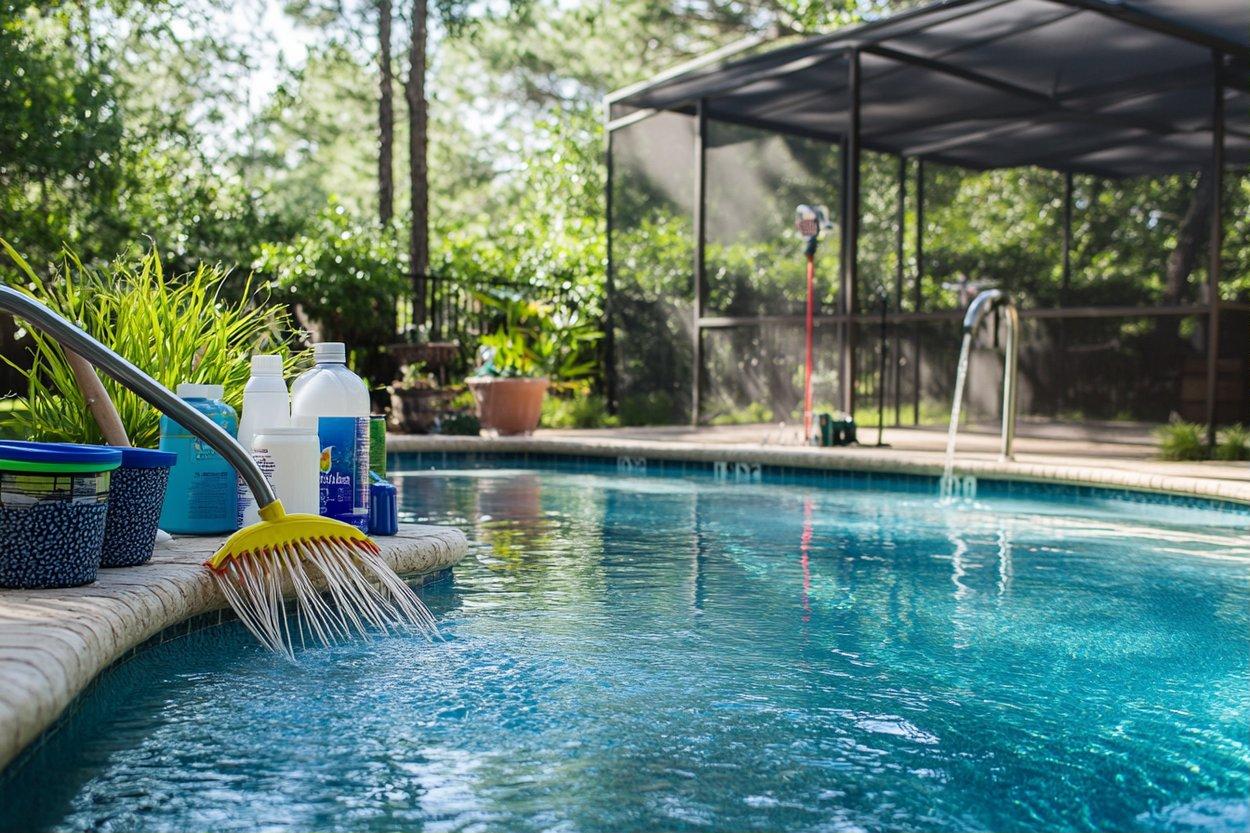Pool Cleaning: Keep Your Swimming Pool Water Clear
A clean pool is more than a visual pleasure — it’s essential for safe, comfortable swimming and long-lasting equipment. Whether you own an in-ground or above-ground swimming pool, routine maintenance keeps water balanced, reduces algae and bacteria, and prevents costly repairs. This article walks through practical pool-cleaning steps, common tools, seasonal tasks, and home-friendly tips to help you manage water quality and protect your investment. This article is for informational purposes only and should not be considered medical advice. Please consult a qualified healthcare professional for personalized guidance and treatment.

How often should you clean your pool?
Cleaning frequency depends on pool use, weather, and surrounding environment. Skimming the surface and emptying skimmer baskets is a daily or every-other-day task during peak season. Brushing walls and vacuuming the floor ideally happen weekly to remove settled debris and biofilm. Inspect filters weekly and backwash or clean as the manufacturer recommends — typically every 1–4 weeks for sand and DE filters depending on loading. Regular checks of water clarity and clarity-related issues allow you to catch small problems before they become major maintenance headaches.
What maintenance keeps a swimming pool healthy?
Healthy pools require a balance of mechanical, chemical, and visual checks. Mechanical tasks include running the pump 8–12 hours daily (adjust for size and pump), cleaning or replacing filters, and checking belts and seals. Chemically, maintain pH between about 7.2–7.8 and free chlorine levels appropriate for your pool type; stabilizer levels and alkalinity also matter. Visually inspect for staining, liner tears, or loose tiles. Keeping a simple log of tests and maintenance helps spot trends and reduces the risk of prolonged issues like algae blooms or corrosion.
How do you test and treat pool water?
Test kits and strips are the fastest way to assess chlorine, pH, alkalinity, and stabilizer. For more precise control, liquid test kits provide titration results. If pH drifts low, use soda ash (sodium carbonate) to raise it; if high, add muriatic acid or sodium bisulfate carefully. For chlorine, shock treatments (calcium hypochlorite or sodium dichlor) address cloudy water or after heavy use. Algae requires targeted algaecides plus brushing and filtration; persistent cloudiness may call for flocculants or a professional water clarification service. Always follow label instructions and wear protective gear when handling chemicals.
Can you clean a pool yourself at home?
Many homeowners can perform weekly cleaning and routine chemical balancing themselves. Essential tools include a telescoping pole with skimmer net, brush, manual or automatic pool vacuum, and basic test kit. Automatic cleaners (robotic or suction) reduce manual vacuuming but don’t replace brushing and chemical control. Larger repairs—pump replacement, major leaks, or complex filtration servicing—often require a professional. If you choose DIY, prioritize safety: turn off power before servicing equipment, store chemicals securely, and never mix products. Local services can help with seasonal openings and deep cleans if needed.
What regular maintenance prolongs pool life?
Proactive maintenance minimizes corrosion, liner failure, and pump strain. Keep water chemistry balanced to prevent scale or etching; low calcium hardness in plaster pools causes etching, while high levels cause scaling. Maintain proper water level to ensure skimmer efficiency and avoid pump cavitation. Winterize in colder climates by lowering water, adding winter chemicals, and protecting plumbing from freeze damage. Inspect and replace worn gaskets, O-rings, and pool lights as needed. Consistent small tasks tend to be far less expensive than addressing major structural or equipment failures down the line.
Conclusion
Effective pool cleaning combines routine mechanical care, regular water testing, and seasonal adjustments to deliver safe, inviting water and extend the life of pool systems. By following a checklist that includes skimming, brushing, filtering, chemical balancing, and inspecting equipment, homeowners can reduce surprises and enjoy clearer water throughout the swimming season. If you encounter persistent problems or major equipment issues, consult a qualified pool technician to assess and recommend safe, code-compliant repairs.






